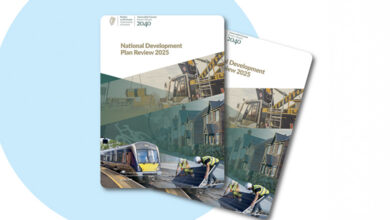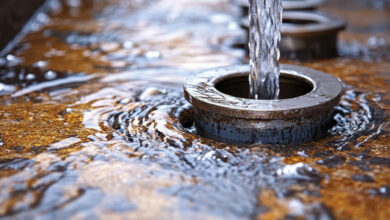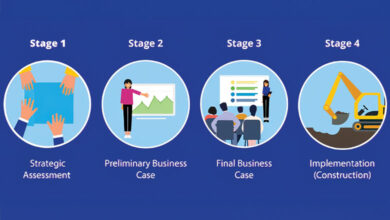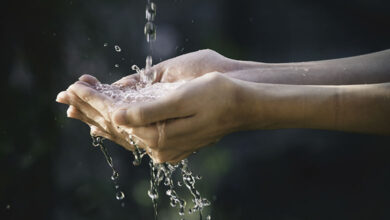Building Ireland’s water resilience
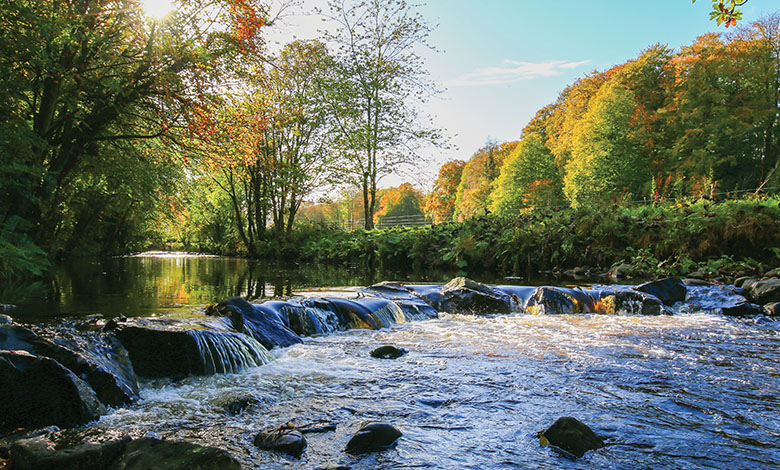
Conor Murphy, Professor at Maynooth University, tells eolas Magazine that the time has come to “rebalance” climate policy by integrating water adaptation and resilience into the core of Ireland’s response to climate change.

Ireland’s water systems are already under pressure from climate change, with increased flood risk, reduced summer flows, and more frequent droughts threatening ecosystems, agriculture, infrastructure, and public health.
In this context, Murphy says: “We have spent a long time focused on mitigation. Reducing greenhouse gas emissions has taken the front seat in climate policy, which is vital. But the impacts of climate change are already here. We need to bring adaptation up to the same level of urgency.”
Murphy is a lead researcher on several EPA-funded climate projects, including HydroPredict, which provides future projections of river flows and hydrological extremes, and was also a lead author to Volume 3 of the Irish Climate Change Assessment Report (ICCA).
‘Climate change is happening now’
One of the strongest examples of this came in October 2023, when Storm Babet caused widespread flooding in Midleton, County Cork. For the first time, Irish researchers were able to conduct an attribution study to determine how much of the event was driven by human-caused climate change.
“We worked with Met Éireann, Imperial College London, and others. What we found was that the likelihood of two-day rainfall events as extreme as Babet has more than doubled over the past century. The intensity of those events has increased by 13 per cent and that is directly because of human activities.”
These findings were backed by long-term rainfall and temperature records held by Met Éireann and analysed by researchers at Maynooth. “We can now clearly discern the fingerprint of anthropogenic climate change,” Murphy adds. “It is showing up in our rainfall patterns, in our temperatures, and in the increasing frequency of extremes.”
A shifting water balance
Using high-resolution models and data from 37 river catchments across the State, HydroPredict examined how climate change is likely to affect average river flows, floods, and droughts out to 2100 under different global emissions scenarios.
“The key headline is that we are likely to see increases in winter flows and decreases in summer flows. In a sustainable future where emissions are brought under control, these changes are modest, but in a high-emissions scenario, they become much more pronounced.”
By the end of the century, summer river flows could decrease by up to 40 per cent in many catchments, while winter flows could increase by 20 per cent, amplifying flood risks. “That is saturated soils, higher base conditions; catchments primed for flooding,” he says.
The impacts on low flows, which are crucial for water quality and environmental health, are even more stark. “We are seeing projected reductions of up to 40 per cent in flows exceeded 95 per cent of the time, particularly under business-as-usual emission scenarios. That has serious implications for ecosystems, abstraction, and pollution dilution.”
Drought is no longer a distant risk
Murphy also highlights a major shift in drought risk, particularly for eastern and southeastern Ireland. Historically seen as a low-level challenge for the island, drought is becoming more serious due to warming-driven evapotranspiration and altered rainfall.
“Before 2018, we had not seen a major drought since the 1970s. But that changed, and what we found was that rainfall alone is not the full story,” he says. “You have to account for evapotranspiration [water lost from soils, plants, and open surfaces] driven by rising temperatures. That is why we use indices like the Standardised Precipitation Evapotranspiration Index (SPEI), not just rainfall, to monitor and project drought.”
Projections show increases in drought frequency, magnitude, and duration, particularly in spring and summer, and especially under medium and high emission scenarios. “In the east and southeast, we could see severe drought conditions becoming far more common. This has knock-on effects for agriculture, water supply, and ecosystem services.”
Local preparation
One of the most striking findings from HydroPredict is the clear linkage between global mitigation efforts and Ireland’s local future. “If we succeed globally in limiting emissions, the impacts on our water systems are significantly reduced,” Murphy explains. “Even for low flows and droughts, the severity of changes is much less under a sustainable pathway.”
However, he cautions that further action is required. “Even if we meet the goals of the Paris Agreement, we are still going to see change. That means we need to prepare for the 2050s and beyond. Water is fundamental to our economic and social resilience.”
Investing in resilience and stewardship
Murphy argues that building resilience in the water sector is both a national imperative and a long-overdue opportunity. “We are not starting from a good place,” he says. “There has been underinvestment in infrastructure, growing demand, and inconsistent water quality. We need to change that.
“Central to this is the concept of water stewardship, which is the idea that water must be carefully managed, protected, and valued across all sectors of society. We have seen steps forward in some places, steps back in others, but we need coherent, long-term planning.
“That means investment, governance, data, and public engagement. We need robust monitoring systems, stronger integration of hydrological projections into planning, and serious political will to make water adaptation a cornerstone of our climate response.”
Concluding, Murphy says: “Climate change is already here. We can see its fingerprints in our floods, in our flows, and in our droughts. The time to adapt is now.”
“Whether it is farming, energy, biodiversity, or housing, water underpins everything. We need to treat it as the critical national asset that it is.”


